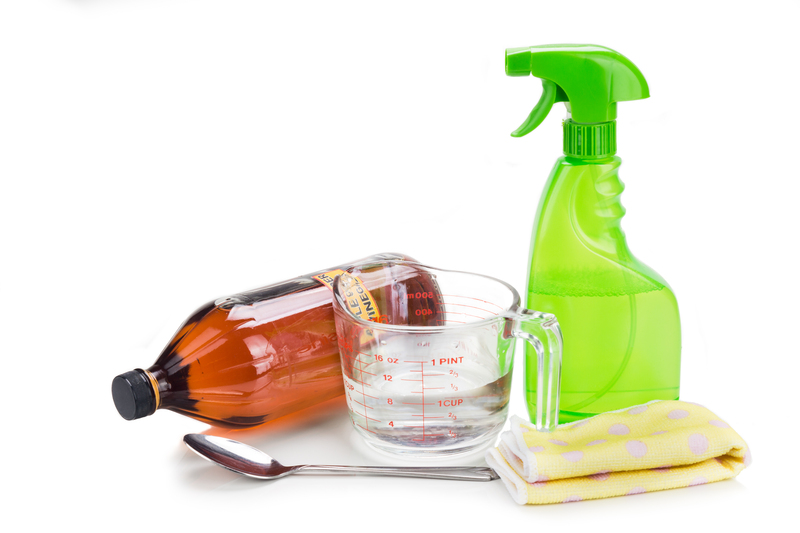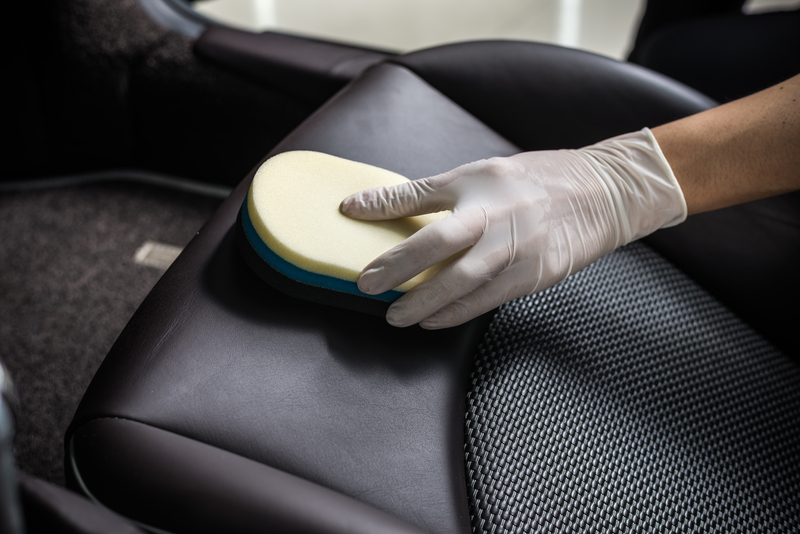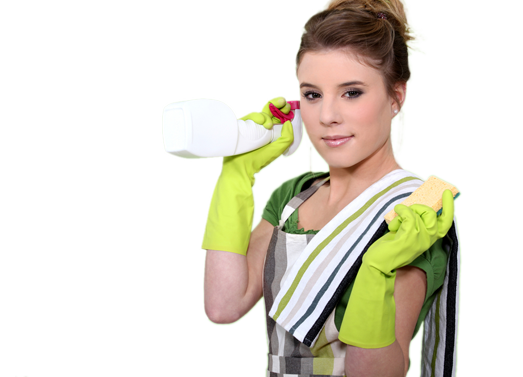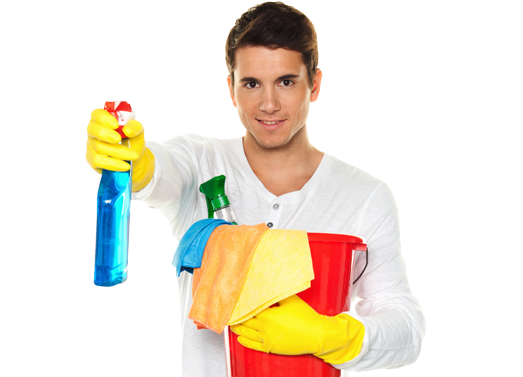Achieving Sustainable Air Quality in Residential and Business Environments
Posted on 02/07/2025
Achieving Sustainable Air Quality in Residential and Business Environments
In the modern world, achieving sustainable air quality is more important than ever for both residential and business spaces. With rising global pollution, urbanization, and the widespread use of synthetic products, ensuring consistent indoor air clarity has become a significant challenge. This comprehensive article will cover insightful information, actionable strategies, and scientific approaches to improve and maintain sustainable air quality in homes and commercial properties.
Understanding the Importance of Sustainable Indoor Air Quality
Air quality directly impacts human health, well-being, and productivity. Prolonged exposure to indoor air pollutants such as volatile organic compounds (VOCs), particulate matter (PM), mold spores, and carbon monoxide can lead to respiratory ailments, allergies, and even chronic diseases. For organizations and businesses, poor air quality can decrease workforce productivity and elevate health-related costs.
Main Factors Affecting Indoor Air Quality
- Chemical Pollutants: Cleaning agents, paints, building materials, and off-gassing from furniture.
- Biological Contaminants: Mold, bacteria, dust mites, pet dander, and pollen.
- Outdoor-to-Indoor Air Transfer: Traffic emissions, industrial activities, and pollen infiltrating indoor spaces.
- Poor Ventilation: Inadequate airflow encourages the accumulation of contaminants indoors.

Key Challenges in Maintaining Long-Term Clean Air
There are several obstacles to achieving sustainable air quality in both homes and businesses:
- Aging Infrastructure: Older buildings often have poor insulation and outdated HVAC systems.
- Lack of Awareness: Many people underestimate the impact of indoor air pollution.
- Urban Density: High population density increases the concentration of contaminants.
- Seasonal Changes: Humidity shifts, temperature fluctuations, and allergen cycles can worsen air quality.
Best Practices to Achieve Sustainable Air Quality
Below are proven methods to attain and sustain optimal indoor air quality in residential and business settings.
1. Enhance Ventilation Systems
- Install or upgrade mechanical ventilation systems (advanced HVAC systems).
- Ensure regular maintenance and filter replacement for HVAC units.
- Utilize energy-efficient air exchangers to maintain fresh air flow while reducing energy consumption.
- Open windows when possible to promote natural ventilation, especially after cleaning or renovations.
Tip: Smart ventilation systems with humidity and particulate monitors can automatically adjust airflow, supporting a healthier environment while saving energy costs.
2. Integrate Air Purification Technologies
- Use HEPA (High-Efficiency Particulate Air) filters to capture allergens, dust, and pollutants.
- Install activated carbon filters for odor and VOC removal.
- Consider UV-C air purifiers to neutralize mold spores, bacteria, and viruses.
- Choose air purifiers with sufficient coverage area for the size of the room or building.
Combining these filters ensures comprehensive pollutant removal for sustainable indoor air quality improvement.
3. Source Control and Green Materials
- Purchasing furniture, carpets, and building materials certified as low-emission by organizations such as GREENGUARD or the EPA.
- Opting for non-toxic paints, sealants, and adhesives.
- Minimizing the use of aerosol sprays and synthetic air fresheners.
- Storing chemicals and cleaning supplies in sealed containers, away from occupied areas.
4. Monitor and Maintain Proper Humidity Levels
- Use dehumidifiers in damp environments to prevent mold growth.
- Aim to keep indoor humidity between 30% and 50% for optimal air quality.
- Ventilate bathrooms, laundry areas, and kitchens to reduce moisture build-up.
5. Implement Smart Air Quality Monitoring
- Install indoor air quality monitors that measure CO2, PM2.5, VOCs, and humidity.
- Use connected devices and IoT solutions for real-time data and alerts.
- Analyze trends over time to identify problem areas and intervene promptly.
The Role of Plants in Indoor Air Quality
Houseplants and green walls can naturally boost sustainable air quality. Certain species are effective at filtering common toxins and increasing oxygen levels indoors. Some recommended options include:
- Spider Plant (Chlorophytum comosum)
- Peace Lily (Spathiphyllum)
- Snake Plant (Sansevieria trifasciata)
- Bamboo Palm (Chamaedorea seifrizii)
Note: While plants can support sustainable air quality, they are not a substitute for ventilation or filtration systems.
Occupant Behavior and Its Impact on Indoor Air
Human activities strongly affect the quality of air indoors. By adopting informed habits, both residents and employees can maintain a sustainable, healthy air environment.
Everyday Strategies
- Remove shoes before entering to limit dust and outdoor contaminants.
- Vacuum and mop floors regularly using HEPA-filter equipped vacuums.
- Avoid smoking or burning candles indoors, as these activities increase particulate matter and toxins.
- Repair leaks to prevent water damage and mold development.
- Limit the use of scented products, which often release VOCs.
Tech-Driven Innovation in Sustainable Air Quality
In today's digital era, emerging technologies play a vital role in achieving sustainable air quality in residential and business environments:
- AI-integrated HVAC systems automatically adjust airflow based on occupancy and pollutant levels.
- Building automation platforms ensure consistent monitoring, filter replacements, and maintenance schedules.
- Mobile apps allow remote control of purifiers, dehumidifiers, and sensors for flexible, real-time adjustments.
- Advanced filtration materials (e.g., photocatalytic filters) remove a wider range of pollutants at lower energy costs.
Innovation is paving the way toward cleaner, healthier, and more efficient indoor environments.
Achieving Compliance and Certification
For businesses and property managers, industry certifications signal a commitment to sustainable air quality standards:
- WELL Building Standard: Focuses on occupant health and well-being, emphasizing air, water, and light quality.
- LEED (Leadership in Energy and Environmental Design): Encourages sustainable site development, including enhanced indoor environmental quality (IEQ).
- RESET Air Certification: Relies on continuous air quality monitoring and actionable data.
Adhering to these frameworks helps ensure a healthier workspace, boosts reputation, and may attract environmentally conscious tenants or clients.
Special Considerations for Residential Versus Business Environments
Residential Air Quality
- Focuses on the specific respiratory needs of family members, including children, elderly, and individuals with allergies or asthma.
- Requires attention to pets, cooking emissions, and localized cleaning products.
- Use of child-safe, eco-friendly solutions and strictly limiting pollutant sources.
Business and Commercial Settings
- High occupant density increases CO2 and particulate concentrations.
- Need for scalable solutions: centralized ventilation, whole-building purification, and strict maintenance schedules.
- Consideration for diverse occupational health needs across open plan offices, conference rooms, and shared amenities.
- Potential integration with health and sustainability policies for maximum impact.
Long-Term Strategies for Sustainable Indoor Air Quality
True sustainability in air quality can only be achieved with a combination of smart design, ongoing maintenance, and community awareness. Here are long-term approaches for both home and business environments:
- Design Buildings for Airflow: Use architectural layouts that promote cross-ventilation and minimize pollutant buildup.
- Invest in Energy-Efficient Technologies: Reduce reliance on fossil fuels and cut emissions from heating or cooling systems.
- Engage Occupants: Provide education on sustainable air practices and encourage feedback for continuous improvement.
- Collaborate with Experts: Work with certified indoor air quality professionals for assessments and remediation.
Government Policies and Community Initiatives
- Advocate for local regulations that limit emissions and promote green building standards.
- Participate in awareness campaigns and community air quality improvement projects.
- Support research into innovative air quality improvement and monitoring solutions.

Measuring Success in Achieving Sustainable Air Quality
To ensure progress, it's vital to continually track and assess air quality improvements:
- Use established metrics such as AQI (Air Quality Index), PM2.5, and VOC concentrations.
- Survey occupants for satisfaction and health-related outcomes.
- Compare pre- and post-intervention air quality data.
*True sustainability is achieved when improvements are maintained over time with ongoing education, investment, and commitment.*
Conclusion: A Future With Clean, Sustainable Air
Achieving sustainable air quality in residential and business environments is not just a trend - it's a fundamental aspect of healthy, productive living and working. By integrating advanced technology, best practices, thoughtful design, and ongoing engagement, you can significantly reduce exposure to indoor pollutants and foster a safe, vibrant environment for everyone. Remember: Your actions today lay the foundation for healthier generations tomorrow.
- Prioritize sustainable air quality strategies in all your properties and encourage others to join the movement.
- Stay updated on new technologies and regulatory changes.
- Educate your family, staff, or community on the importance of clean air.
With determination, knowledge, and innovation, clean, high-quality indoor air is within reach--for homes, businesses, and the world.



